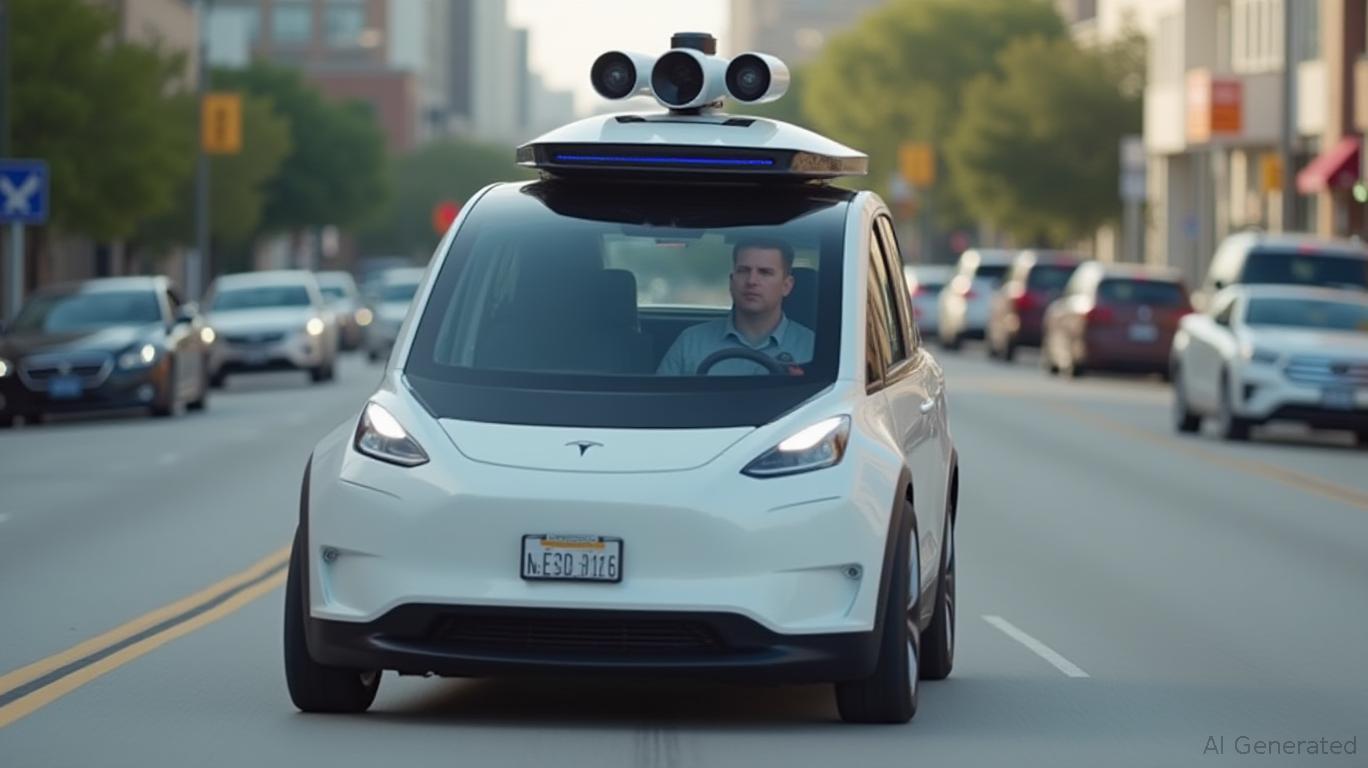Tesla's Robotaxi Rollout in Austin: A Bold Leap Toward Autonomous Dominance
Isaac LaneMonday, Jun 23, 2025 11:09 am ET
The deployment of Tesla's first unsupervised autonomous robotaxi in Austin, Texas, on June 22, 2025, marks a pivotal moment in the race to commercialize self-driving technology. While the initial fleet—a single Model Y operating within a geofenced area—may seem modest, it signals Tesla's audacious ambition to redefine mobility and establish a new revenue stream that could eclipse its current car sales. For investors, this move raises critical questions: Can Tesla's vision-only autonomous system overcome safety and regulatory hurdles? And does its aggressive scaling strategy position it to capture the $1 trillion autonomous mobility market analysts project by 2029?

### The Strategic Play: Speed, Scale, and Leverage
Tesla's approach is as much about market control as it is about technology. By launching with minimal regulatory constraints in Texas—a state that has embraced autonomous vehicle testing—the company avoids the costly delays faced by competitors like Waymo, which rely on lidar-equipped vehicles and strict geofencing. This first-mover advantage allows to gather real-world data while building a brand narrative around leadership in autonomy.
The financial upside is staggering. Analysts estimate that Tesla's robotaxi service could contribute over $1 trillion to its enterprise value by 2029, driven by recurring revenue from software subscriptions and autonomous ride-sharing. Unlike traditional automakers, Tesla already owns the hardware (its electric vehicles), the software (Full Self-Driving, or FSD), and the customer relationship. This vertical integration gives it a structural advantage over competitors like Cruise and Waymo, which depend on partnerships with automakers or ride-hailing platforms.
### The Risks: Safety, Regulation, and Skepticism
Yet Tesla's path is fraught with obstacles. Critics, including safety advocates like The Dawn Project, have highlighted flaws in its vision-only system, such as a recent test where a Model Y failed to stop for a stationary school bus with a child-sized mannequin. Such incidents underscore the gap between Tesla's ambitions and the maturity of its technology. Meanwhile, regulatory pushback looms large: California's new safety guidelines, effective September 2025, could delay its expansion there, and federal scrutiny over crash reporting and system reliability remains unresolved.
The financial risks are also significant. Tesla's net income fell 52% in 2024 as it poured capital into autonomous R&D and factory expansions. While its $32 billion in cash provides a buffer, the costs of scaling a fleet to hundreds of thousands of vehicles—and defending against potential liability claims—could strain margins.
### The Investment Case: Long-Term Vision vs. Near-Term Realities
For investors, the calculus hinges on whether Tesla can balance speed and safety while navigating a fragmented regulatory landscape. On one hand, its Texas rollout demonstrates a willingness to take bold risks that could pay off exponentially. The Vision-Only system, while imperfect, may become viable through iterative learning from millions of miles of data. On the other hand, investor patience could wane if accidents, regulatory setbacks, or competitive inroads from rivals like Waymo's lidar-enhanced systems erode confidence.
### Conclusion: A High-Stakes Gamble with Monumental Upside
Tesla's robotaxi deployment is a high-risk, high-reward bet. The company is gambling its reputation, capital, and regulatory goodwill on the belief that its software can mature faster than its critics' doubts. For investors, the question is whether to back a pioneer in an industry still in its infancy or to wait for clearer proof of safety and scalability.
In the short term, Tesla's stock could face volatility as regulatory and safety challenges unfold. But over the long term, success in autonomous mobility could cement Tesla's position as the Apple of transportation—profiting from software subscriptions and data-driven services rather than hardware alone. For the bold investor willing to endure near-term turbulence, Tesla's robotaxi push represents a once-in-a-decade opportunity to bet on the future of mobility.
Investment Takeaway: Tesla's autonomous ambitions warrant a cautious “hold” rating for now. Investors should monitor regulatory approvals beyond Texas, safety incident reports, and the trajectory of its FSD software upgrades. A shift toward partnership-driven expansion or a slowdown in capital expenditures could tip the balance toward a “buy” rating. For now, the stakes are too high—and the risks too uncertain—to bet the farm.
Disclaimer: The news articles available on this platform are generated in whole or in part by artificial intelligence and may not have been reviewed or fact checked by human editors. While we make reasonable efforts to ensure the quality and accuracy of the content, we make no representations or warranties, express or implied, as to the truthfulness, reliability, completeness, or timeliness of any information provided. It is your sole responsibility to independently verify any facts, statements, or claims prior to acting upon them. Ainvest Fintech Inc expressly disclaims all liability for any loss, damage, or harm arising from the use of or reliance on AI-generated content, including but not limited to direct, indirect, incidental, or consequential damages.

Comments
No comments yet